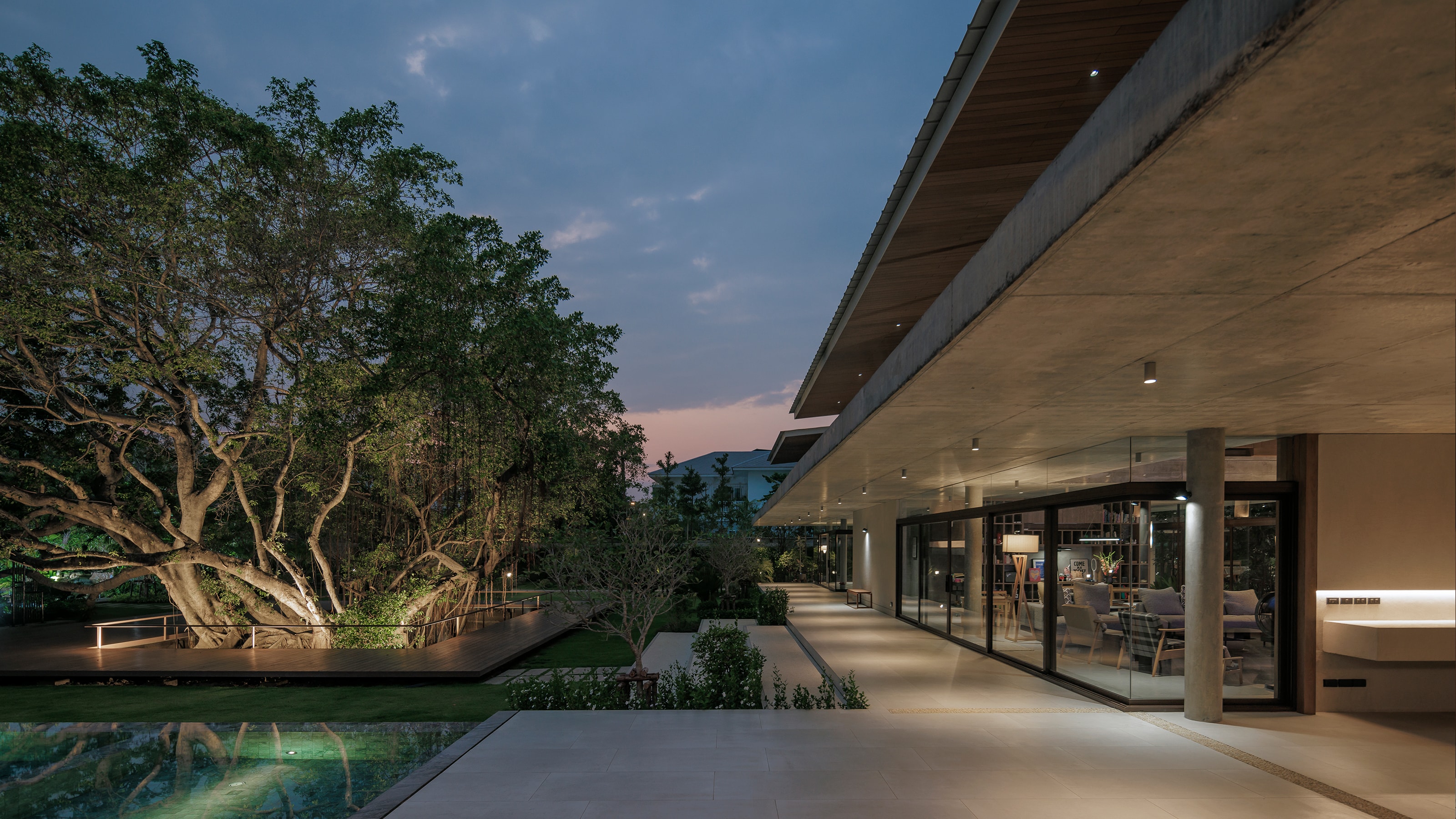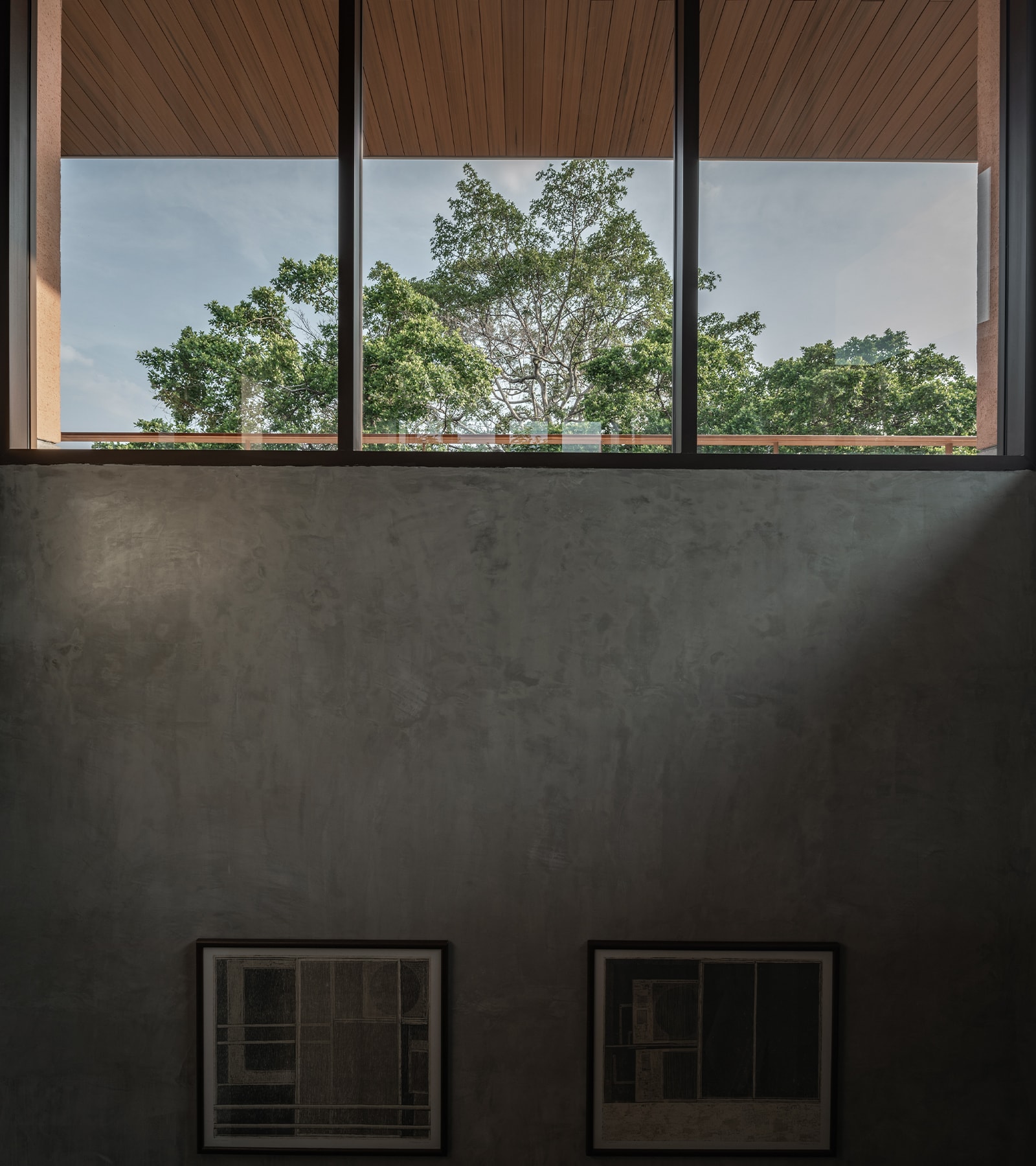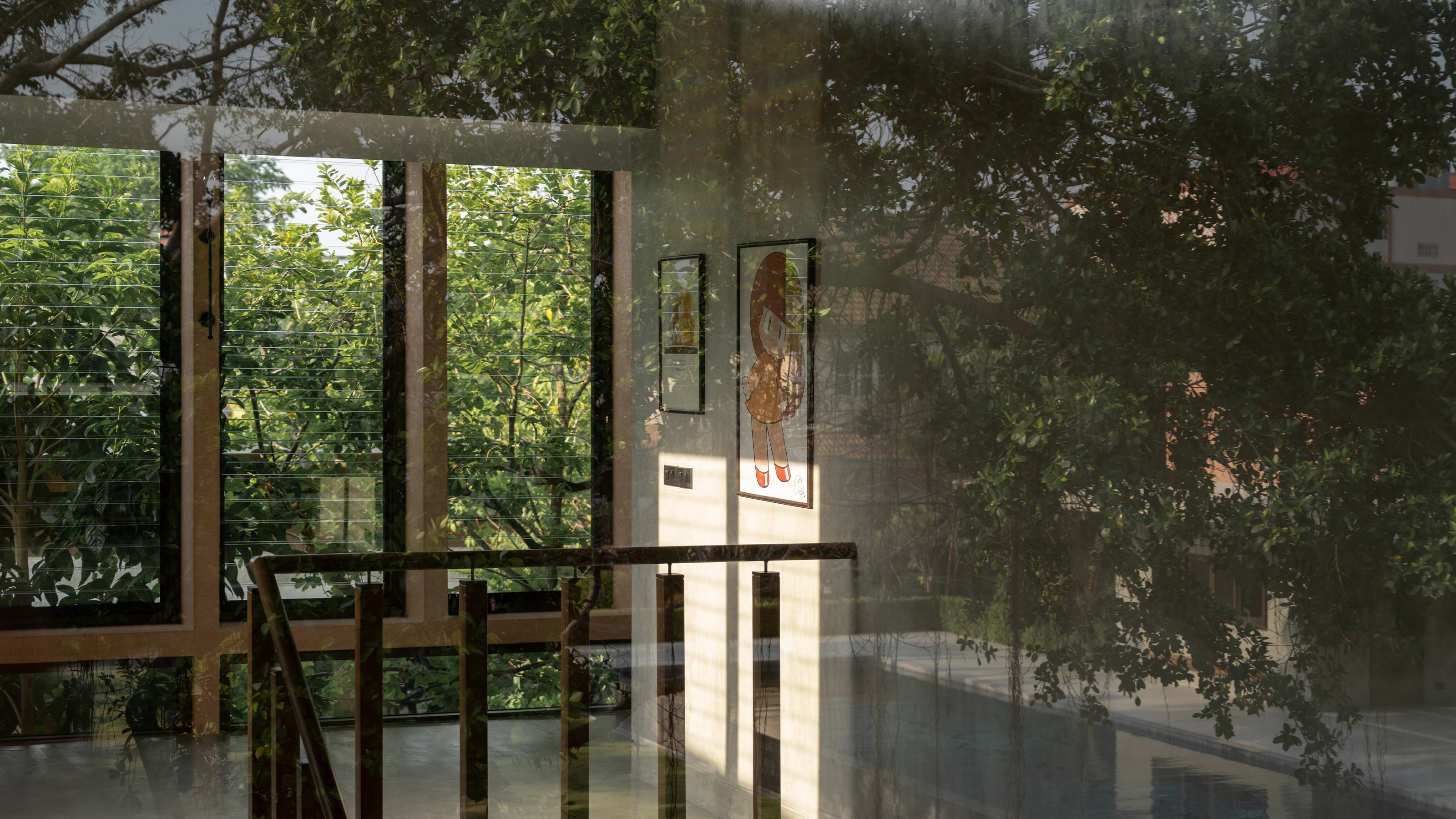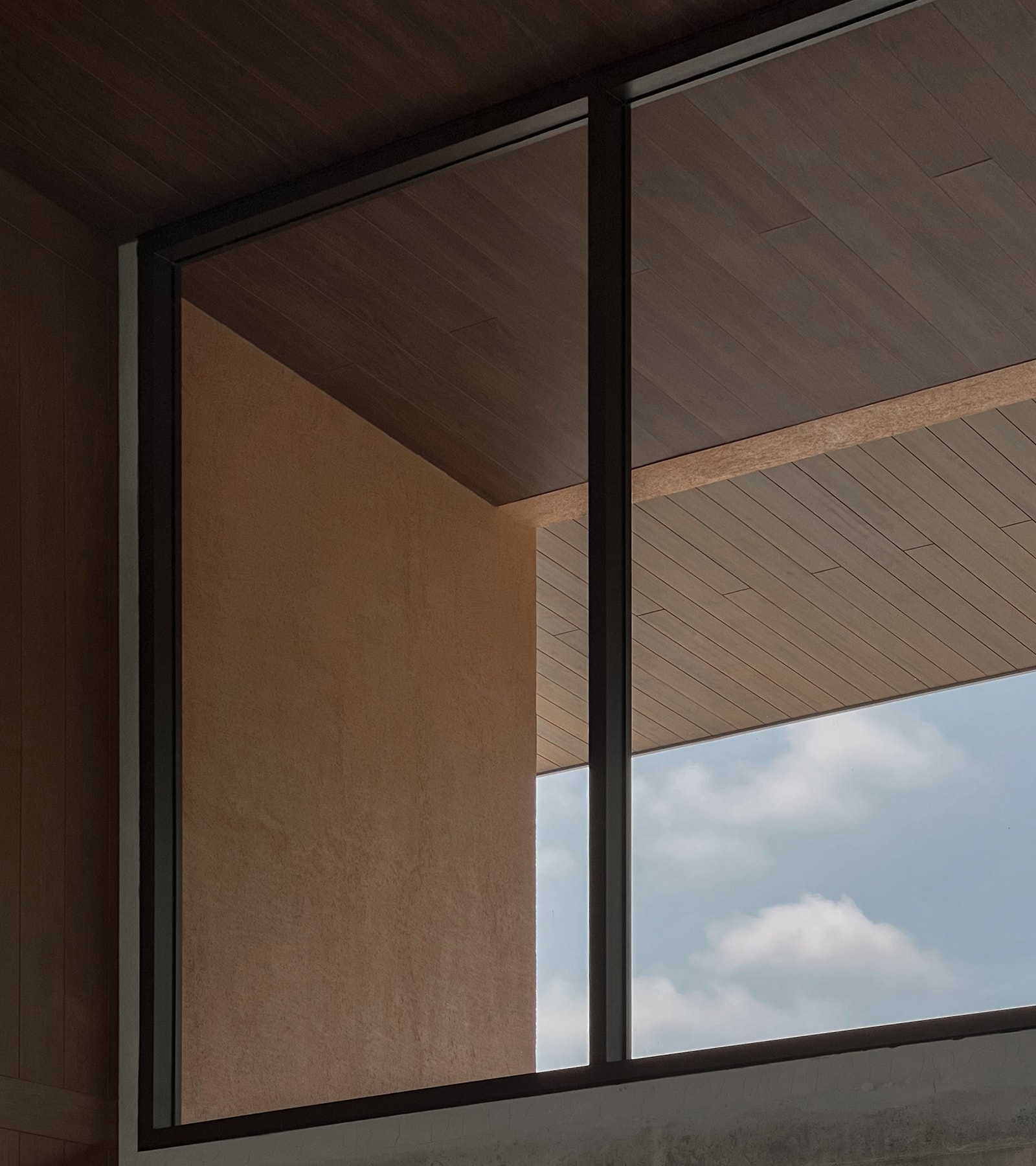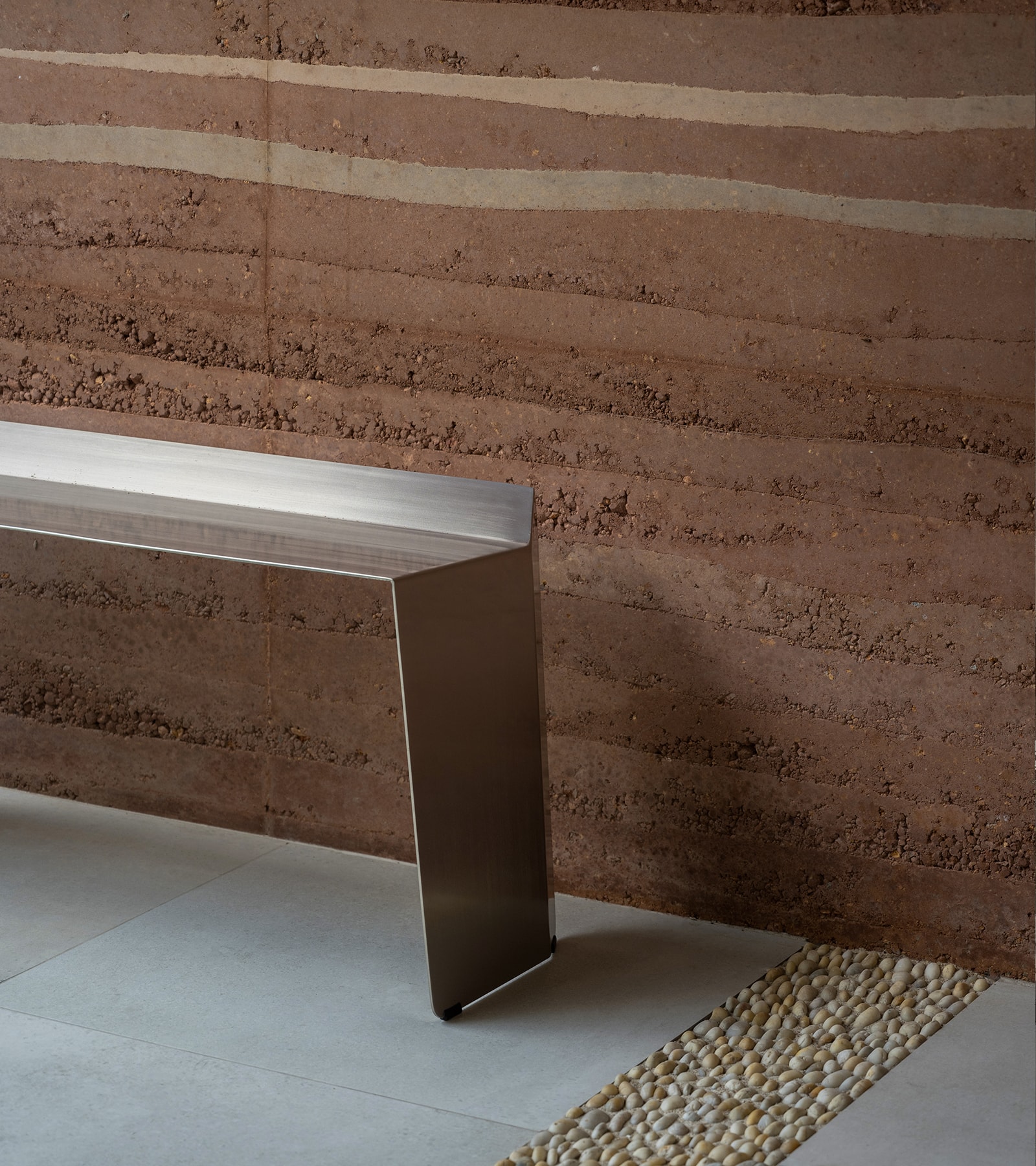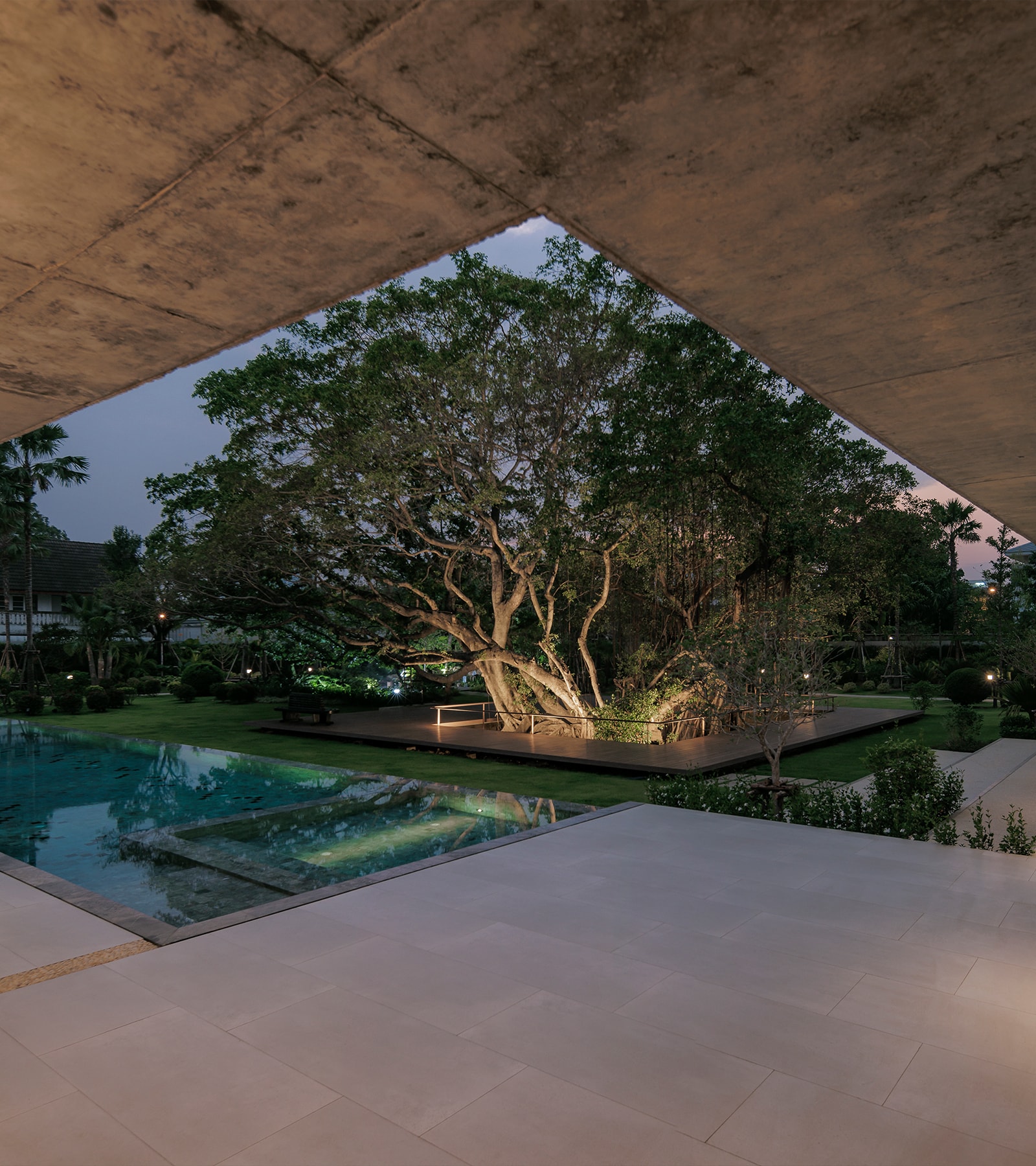It is not very common to see trees take center stage in residential design projects. The perennial evergreens played a crucial role as the protagonists in the genesis of ideas that were later materialized into the design of this house. After making the decision to construct a new home for their growing family, the two owners nearly forgot the 1.38-acre land that has been in their family for 50 years, passed down through multiple generations of descendants. The land had become deserted, as it was inhabited by trees, plants, and wetlands. Upon the first survey, a walk through the damp, plant-covered path led the architects to the two massive banyan trees that stand majestically at the center of the land. These towering giants, with their expansive and beautifully lush canopies, were truly a breathtaking sight. The kind of majesty and beauty that can only be shaped by nature and the passage of time.
The banyan trees belong to different species, yet they have grown together as enduring companions. What Phongphat Ueasangkhomset and Parnduangjai Roojnawate, the two principal architects of Anonym who were assigned to oversee the project, chose to do was not only preserve the pair of large evergreens but also design an L-shaped wooden deck around them and create an open layout that grants every part of the house access to the stunning beauty of nature. That is how the house got the name "Baan Sai Khoo" (twin banyan house).
The owners' previous residence was a townhome located in downtown Bangkok. After getting married and starting a family, the couple agreed to the idea of building a new and larger home that would provide ample space for their children to play and grow, reminiscent of the natural surroundings they had both experienced and cherished during their own childhoods. The couple wanted to ensure that their aging parents were well taken care of, so they decided that the new home would include a separate house specifically designed for their parents. By having everyone nearby, the family no longer needs to commute between two homes every weekend in order to have a family get-together.
"A significant amount of soil was brought in to adjust the terrain for the construction of this home. This was necessary because the original ground level was considerably low and consisted of wetlands. We told the architects that we wanted each room in the house to have practical functions, not just beautiful-looking space. One important requirement was that we both preferred living spaces with natural air rather than an air-conditioned room. We love the presence of natural light and the circulation of fresh air. We like to be able to move through different parts of the house without having to repeatedly open and close doors in order to keep the cool air inside an air-conditioned room. We would love for our house to have corners where we can sit outside even when it's raining without getting wet. We wanted spaces for our kids to freely run around, as well as a large enough area for us to do our daily jogging and cycling. We even thought about having a garden that is wheelchair-accessible.
The shorter section of the house's L-shaped layout is dedicated to the male owner's private quarters, which include his office and workshop. Additionally, there is a semi-outdoor space where he teaches private diving classes. This area runs parallel to the 25-meter-long and 3-meter-deep pool. This part of the house has its own separate entrance and exit to ensure privacy for the main living area, which is situated on the elongated side of the layout. The architects have designed the main living space with a double-volume ceiling, which provides visual access to another office on the upper floor. This design allows the owners to see their sons and parents hanging out on the first floor, even if they are in different parts of the house. The two buildings are connected by a barbecue area and a spacious patio furnished with a set of semi-outdoor furniture and designed to be situated under a canopy that provides protection from rain and excessive sunlight while still allowing for a pleasant natural airflow.
Instead of merging the functional spaces into a single structure, the architects made the decision to create a small courtyard by leaving a space between the two buildings. This courtyard serves the purpose of connecting and separating the living and dining areas at the same time. The space between buildings serves multiple purposes. It acts as a vent that helps enhance natural ventilation and expel hot air. Additionally, it provides a small corner that functions as a cozy outdoor lounging area. In contrast to typical courtyards filled with abundant greenery, this one features a striking olive tree positioned gracefully in the center of the white-gravel floor. This arrangement creates a cool and distinctive landscape, infusing the living space with a touch of minimalism.
"We divided the building by placing the dining area separate from the open-air hot kitchen. The female owner's living space is situated towards the rear. The area is designed to resemble the ambiance of a glass house, featuring a transparent glass ceiling that is covered by another layer of roof to provide the space with protection from the heat while still allowing natural light to enter. The highlight of the lively interior is a whimsical accent wall that has been beautifully painted by famous visual artist Pomme Chan. A mid-sized courtyard is situated at the back of the property, creating a certain distance between the main house and the home of the owners' parents. This cluster of buildings is arranged in a U-shaped layout, surrounding the courtyard and situated discreetly behind the main house. This arrangement provides senior family members with their own private living space, complete with all the necessary amenities, in a separate house. Meanwhile, the grandparents have the ability to access and use the outdoor grounds, including the courtyard and the edible garden, as if it were their own personal front yard garden. All the bedrooms are located on the upper floor of the house. The owners requested bedrooms of a moderate size without any over-the-top decorations, as most of their time is spent downstairs. It is a big house, but it is designed with only the necessary functions. It features various semi-outdoor living areas under a canopy that extends almost 2 meters where everyone can comfortably enjoy natural airflow throughout the day," the design team from Anonym explained how they translated the ideas and requirements into actual living spaces.
At the invitation of the owners, we all took a seat on the patio sofa as our conversation was coming to an end. "Before the house was fully completed, we made the decision to temporarily move just to see whether there was anything we might want to add to the decoration. But it turned out that since that day, with the initial intention to only spend a couple of nights here, we haven't really gone back to sleep at the old house again (laughs). We don’t want to live in the city anymore. We don’t even want to spend our vacation at a hotel because this house has everything we need. We all walk a lot—like over 10,000 steps a day. We get to exercise, swim, ride our bicycles, jump rope, feed the fish, and really live our lives in the midst of nature, like we’ve always wanted. Our kids are not glued to the television or gadgets all the time because they have other fun stuff to do all day."
During our visit to the house, which took place in the middle of summer, we were pleasantly surprised by the constant breeze that flowed through the house all day long. This refreshing wind kept the semi-outdoor lounging corner comfortably cool, thanks to the large canopy that provided shade and protected the area from the intense rays of the summer sun. Around us, everything looked like a beautiful pool villa, tempting us to lay back and take a nice nap for a while.
